[Xia Ke Island | Solution Bureau] This history should be made more Hong Kong people know
Author:Overseas network Time:2022.09.07
"Join the short gun team, so I didn't want to live out."
In the film "When the Moon has" directed by the Hong Kong director Xu Anhua, Liu Heizai, the captain of the "Short Gun Team" of the Dongjiang Column, was born and died. The background of the movie was a life -and -death rescue carried out after the fall of Hong Kong in the early 1940s.
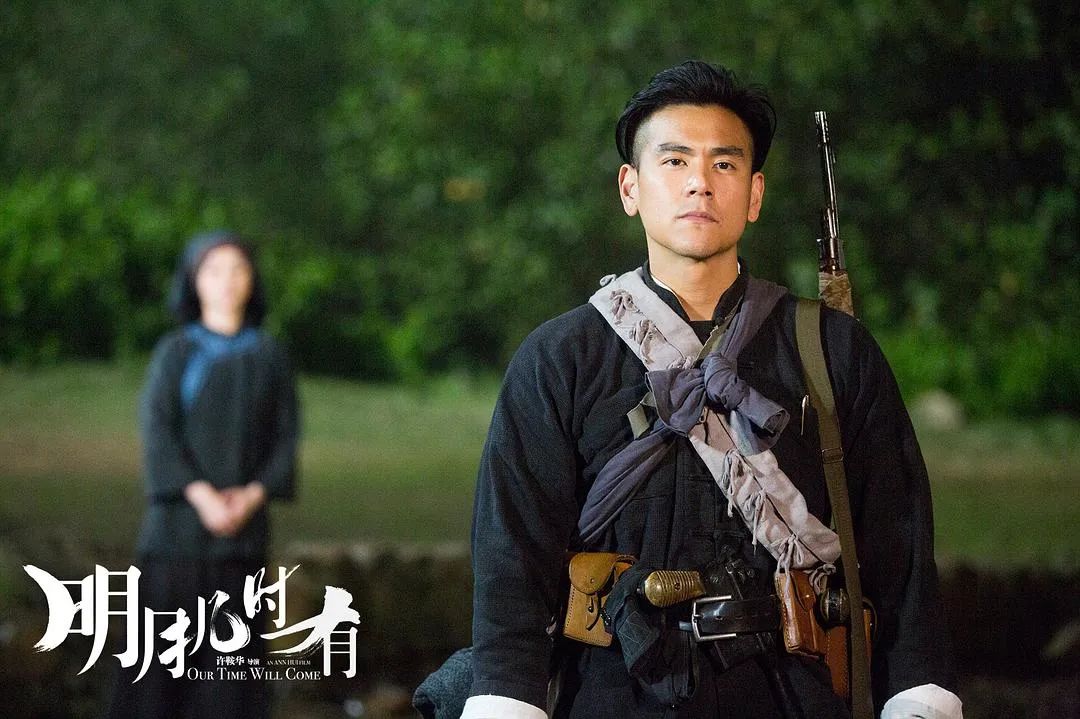
Liu Heizai (Peng Yuyan) in the movie "When is the Moon". Picture source: network
On September 3, the "Hong Kong Shatoujiao Anti -Japanese War Museum" was officially unveiled. This is the first Anti -Japanese War Memorial Hall in Hong Kong. It is built in the Luojia House of the Hong Kong -Kowloon Brigade.
one
On December 25, 1941, after the 18 -day defense war, Hong Kong fell and entered the dark period of the day and 8 months long and 8 months.
But resistance has never stopped. On December 9, 1941, the Japanese army invaded Hong Kong the next day. The predecessor of the Dongjiang column led by the Communist Party of China, the Guangdong People's Anti -Japanese Guerrilla, entered the Hong Kong Organization of the Anti -Japanese War. There are about a thousand members of the squadron.
Hong Kong historical expert Liu Shuyong introduced that the Hong Kong -Nine Ninth Brigade was the only armed forces that had been established during the fall of Hong Kong and always insisted on resisting Japan. Members were mainly the children of the former residents of the New Territories of Hong Kong and were the mainstay of Hong Kong's anti -Japanese war.
In the spring of 1942, He Xiangning, Liu Yazi, Zou Tao Fen, Mao Dun, Xia Yan, Fan Yangtze River, Qiao Guanhua and other more than 800 patriotic democrats and cultural celebrities suddenly suddenly "disappeared" under the close blockade of the Japanese invaders. A few months later, they appeared behind the Anti -Japanese University and base areas, which caused the enemy's popularity.
It is the Hong Kong -Kowloon Brigade that has completed this greatly known as "the greatest rescue work since the War of Resistance Against Japan."
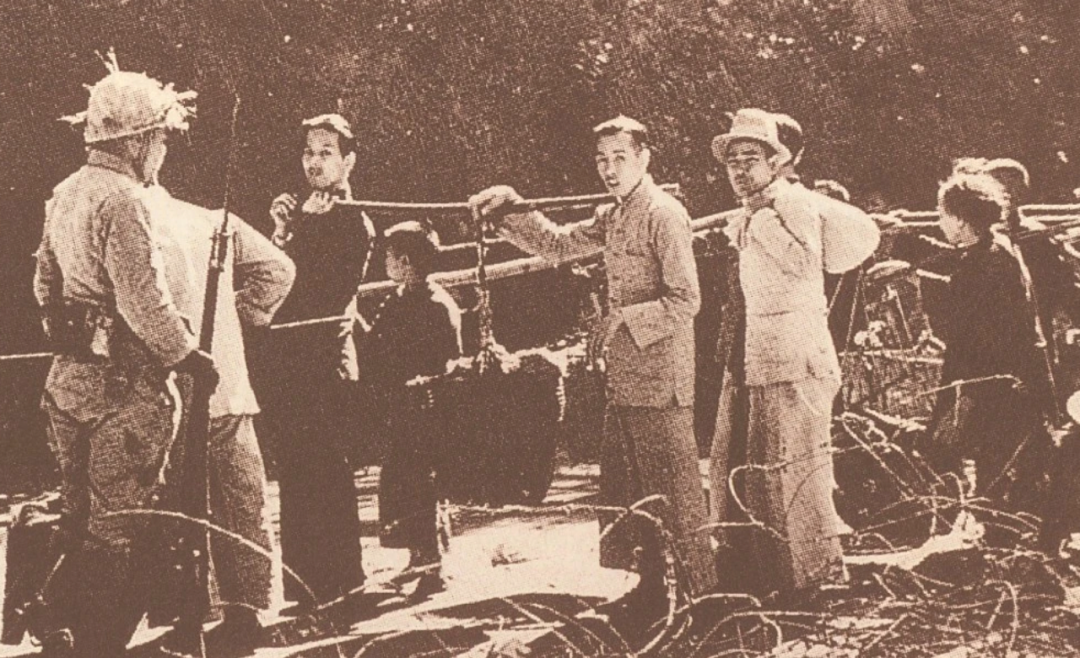
The Hong Kong -Ninth Brigade secretly transferred to the cultural industry. Picture source: Dagong.com
To rescue large -scale rescue under the eyelids of the enemy, the difficulty of the task can be imagined. The guerrillas should take hundreds of men, women, and children, secretly cross the sea from Hong Kong Island to Kowloon, cross the mountains through the mountains through the New Territories, and then go to the rear via Macau, Shenzhen, Huizhou and other places. To this end, the guerrilla players prepared 12 rescue routes to use the "ant move" method. Some of them took the land and some walked the sea, and the total schedule of more than 20,000 brilliance was finally delivered to the safe area.
Yuan Hong, the old soldier of the Hong Kong -Ninth Brigade, recalled that when he followed Liu Heizai to escort the democracy of the country, he almost "had a small battle every day."
In the late War of Resistance Against Japan, the Hong Kong -Nine Ninth Brigade also assumed intelligence collection. In March 1945, the Japanese Army quietly mobilized tens of thousands of people to deploy around Guangdong, which pose a great threat to the US military counterattack. In order to cooperate with the Allied operations, the Hong Kong and Nine Brigade of the Kuang of the Hong Kong and Ninth Army mobilized the deployment, number, cloth defense, and labor situation one by one to provide important information for the US military.
"Our intelligence quality is very high, and mainly rely on the masses and underground party members. Americans admire it very much and think that it is difficult to do it in any country in the world." Said Yuan Geng, the former school of the nine nine brigades in Hong Kong.
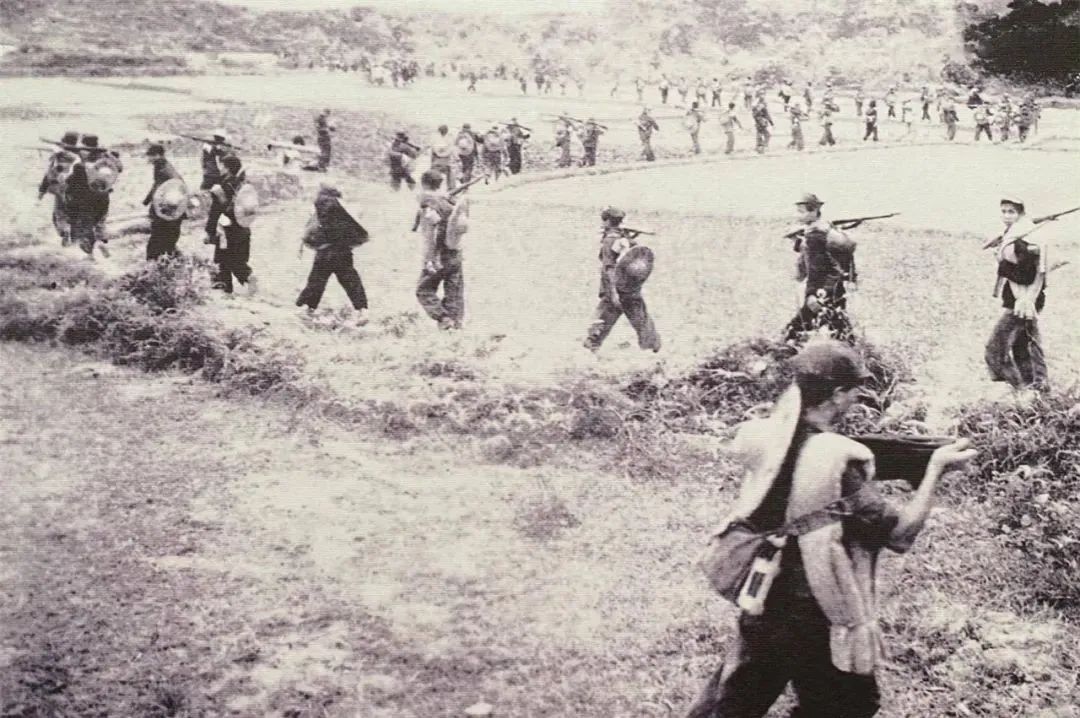
The Hong Kong -Nine Brigade guerrillas were marching. Picture source: Yangcheng Evening News
two
Born in the New Territories, Wen Rongsheng was only thirteen or four years old when he joined the Hong Kong -Nine Ninth Brigade. His father was kicked to death by the Japanese invaders. His mother supported him to fight with the "Eighth Route" (Eighth Route Army) to recover the king's hatred.
The Hong Kong -Kukang Brigade's city captain Fang Aunt, his mother, in Hong Kong in Hong Kong. When he performed the task, his mother Feng Zhi was arrested by the Japanese gendarmerie. Essence This is not a movie fiction, but a real story.
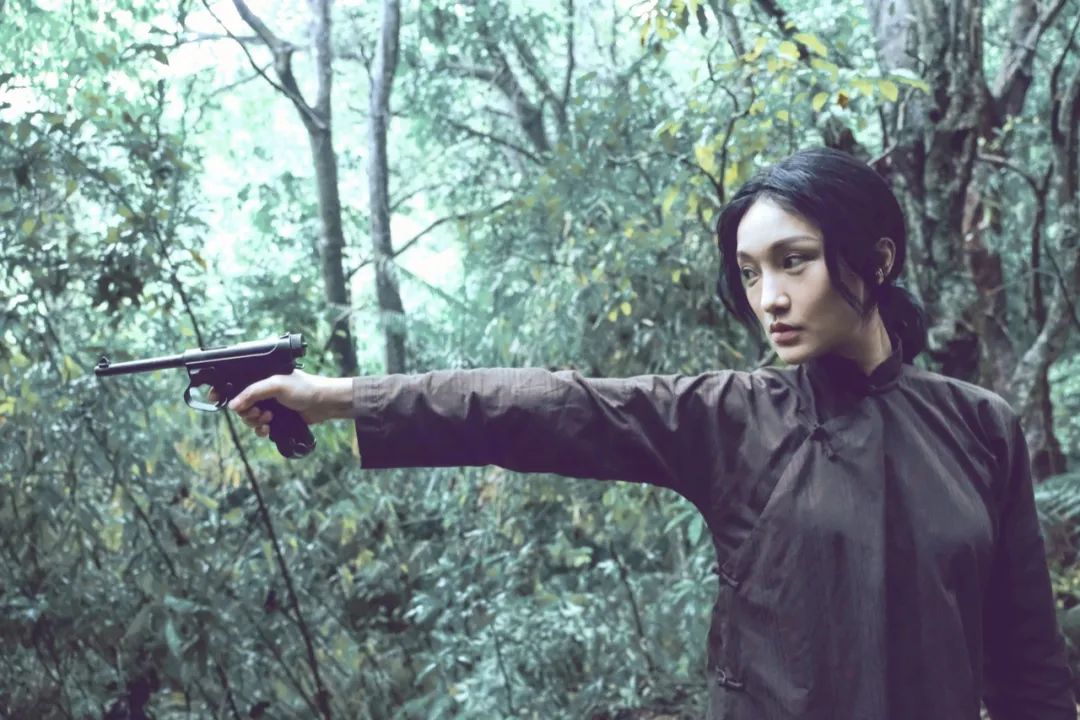
Fang Gu (Zhou Xun) in the movie "When is the Moon". Picture source: network
There are many stories in Hong Kong people who support the Anti -Japanese War.
Wuyuteng Village, Shatoujiao, New Territories in Hong Kong is a famous "Red Village". The important Wuyu Teng meeting in the history of Dongjiang Column was held here. The village also had a radio station contacted by the Guangdong Party Organization and Yan'an Party Central Committee.
The veteran soldiers in the village recalled that at that time, more than 500 people in the village, almost all of the elderly, young people, women, and children participated in the anti -Japanese work arranged by the guerrillas, and 39 young people joined the guerrillas. During the fall of Hong Kong, the Japanese army launched more than 10 sweeps against Wuyuteng and nearby villages, forcing the villagers to supply guerrilla members. Nine people including the village chief Li Shifan would rather die and sacrifice.

Wuxu Teng Anti -Japanese Memorial Monument (Picture Source: Xinhuanet)
The newly established Shatoujiao Anti -Japanese War Memorial Hall, Luo Family House, where Luo Yuzhong, Luo Rucheng, Luo Oufeng, Luo Xuyue, have participated in the CCP's leadership in Hong Kong during the fall of Hong Kong. Known as the "Hong Kong Anti -Japanese Family".
Huang Junkang, the son of Luo Xuyue and the chief of the Shatoujiao Anti -Japanese War Museum, said that he had asked the elders before that there were fields and business in the family that year. Why are they still participating in guerrillas? The elders answered that they are convinced that only the Communist Party of China can save China, and the belief in walking with the party has always been firm. This time, the Luo family's big house was converted into the Anti -Japanese War Memorial Plan, and it was also unanimously supported by the descendants of the Luo family.
In December 1943, the Communist Party of China expanded the establishment of the Guangdong People's Anti -Japanese Guerrilla Team Dongjiang Column on the basis of the Guangdong People's Anti -Japanese Guerrilla Corps.
Among the members of the column, there are many intellectuals, many compatriots in Hong Kong and Macao, many overseas Chinese, and female soldiers, and the masses have a deep foundation. During the victory of the War of Resistance Against Japan, there were more than 11,000 columns and more than 12,000 militias. They moved to the two sides of the Dongjiang River, entered the nine enemies of Hong Kong, dozens of counties and cities in the northern Guangdong area and Hanjiang area. More than 10,000 square kilometers, covering more than 4.5 million people, fighting more than 1,400 times against the Japanese puppet army, and more than 6,000 Japanese puppet troops. Li Jiachao, the Chief Executive of the Hong Kong Special Administrative Region, attended the opening ceremony of the Hong Kong Shatoujiao Anti -Japanese War Museum. Picture source: Hong Kong Special Administrative Region Government website
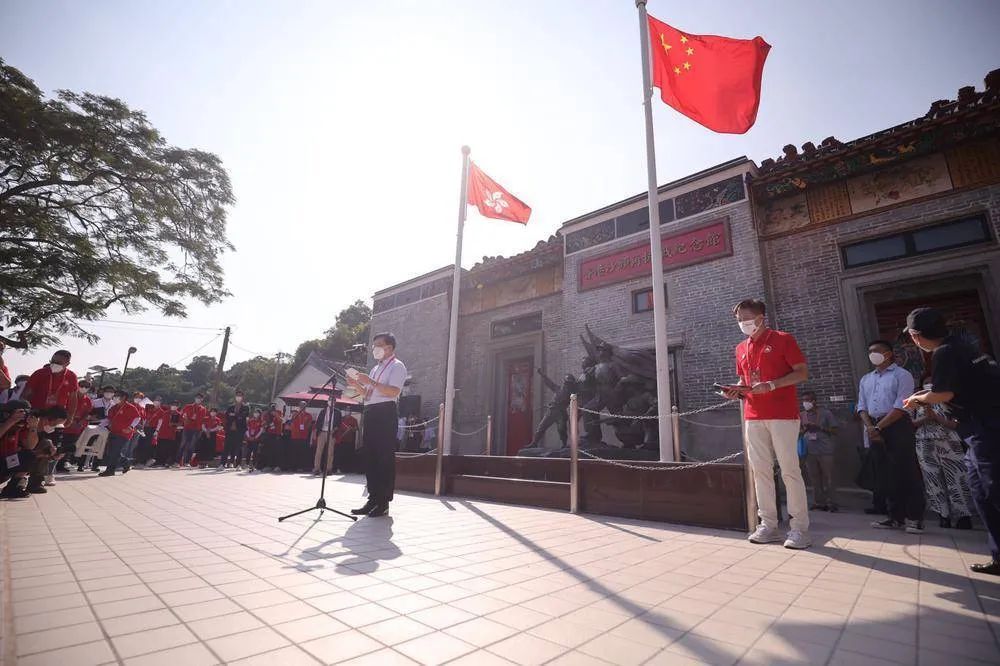
three
"The history of the Anti -Japanese War is of great significance and far -reaching impact. The Anti -Japanese War Memorial allows all of us, especially young people, to learn this valuable history." On the day of the Shatou Kok Anti -Japanese War Memorial Museum, Hong Kong Chief Executive Li Jiachao released such a Weibo.
Needless to say, for a period of time, due to the influence of Hong Kong and British colonial rule, and the education level after returning, there are many shortcomings in Hong Kong's collation, display, and education in the history of the Anti -Japanese War. After the historic turning of chaos to governance in Hong Kong, the SAR government has strengthened patriotism education and historical and cultural education.
In addition to building the first Anti -Japanese War Museum, the Hong Kong History Museum and the Hong Kong Maritime Defense Museum have also set up long -term exhibitions related to the Anti -Japanese War. The patriotic spirit is passed down. These are conducive to cultivating new generations of patriotic and Hong Kong talents.
Chen Yong, vice chairman of the Hong Kong Civil Construction Federation, told the island girl that the history of the Hong Kong Anti -Japanese War vividly presented by the memorial can definitely touch the citizens of Hong Kong, especially the younger generation. Only Hong Kong people can avoid being misleaded by the truth and objective way to understand the history of the Anti -Japanese War.
At the end of the movie "When is the Moon", Liu Heizai left the boat, and the director slowly pulled the camera. From the past to the present Hong Kong, he transformed from the dark night Jiangtian to the bright light of Victoria Harbor. "Is it easy to come in Hong Kong?" This is the thinking that the director and the screenwriter tried to pass through the movie. In fact, with history, the pace of Hong Kong to the future will be more stable.
Text/Dongli Old Friends
Edit/Dian Cang, 苍 苍 苍 苍
Source/"Xia Ke Island" WeChat public account
- END -
The establishment of the Hard Pen Calligrapher Association of Lizhou District and the First Member Congress Conference was successfully held
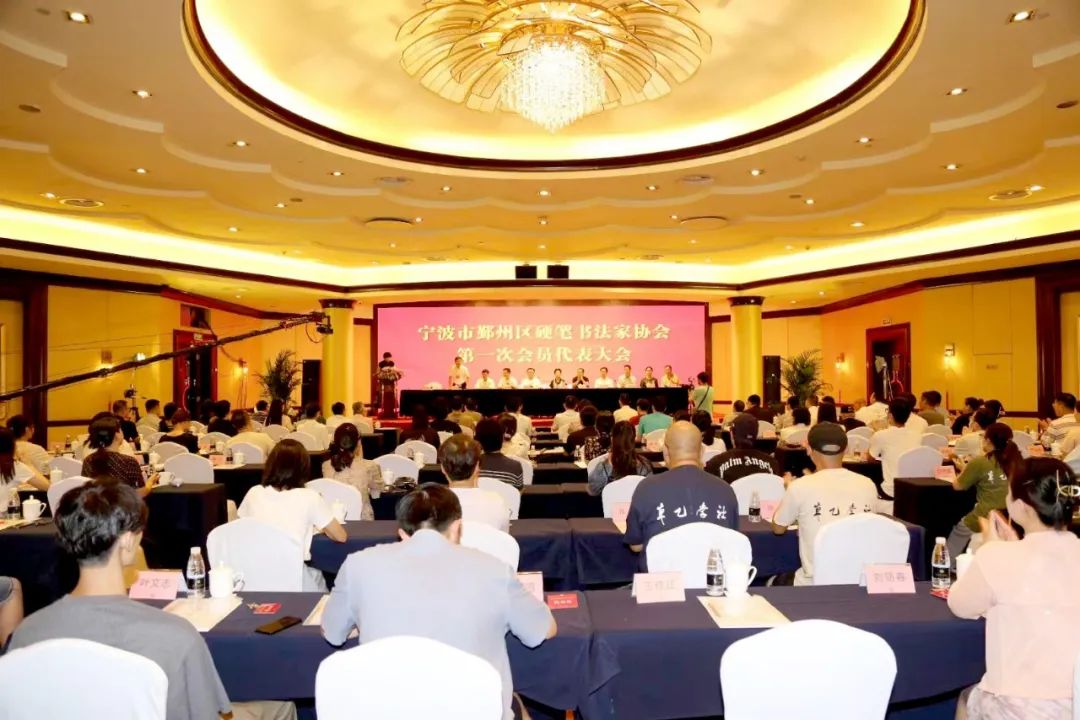
On August 8, 2022, the first member congress of the Puzhou District Hard Pen Calli...
The exhibition outside the cultural relics caused "Shaanxi heat"

Picture Source | China News AgencySharing cultural heritageFirm cultural self -con...